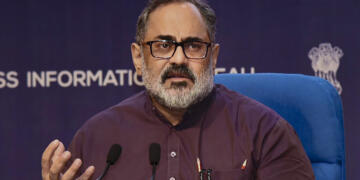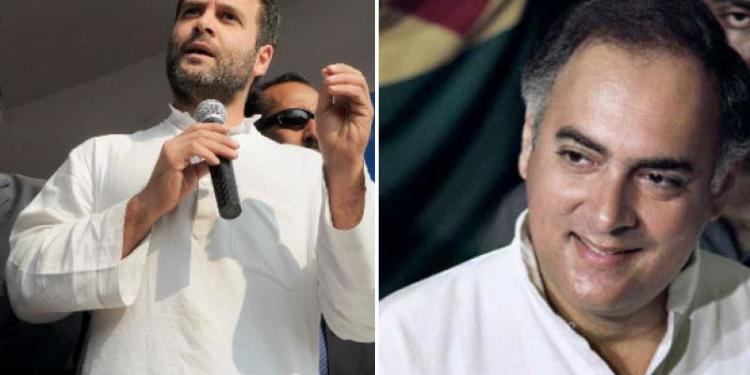Criticising the current government on its stand on the Ram Mandir construction has been a favourite of the Congress-led opposition parties. They claim that that issue of Ram Janbhoomi is immoral as it targets the religious sentiments of the people. Hence, according to them, political campaigning should be outside religious purview. However, Congress seems to forget who began this whole saga involving Bhagwan Ram into politics.
Back in 1988, when the by-poll elections were being held in the 7 vacancies of the Lok Sabha, matters for the Congress party were immensely troubled in the Allahabad constituency. VP Singh, who had just resigned from the Congress party, over the government’s hesitation to investigate alleged kickbacks in defense contracts; had floated his own party by the name of Jan Morcha. He was contesting against Sunil Shastri, son of the late Prime Minister, Lal Bahadur Shastri, who was fielded on a Congress ticket. To counter the immense popularity of VP Singh, Congress had tried everything in their power to come out successful in the elections, even if it meant employing immoral tactics.
In this regard, to counter the popularity of VP Singh, Congress Party had enlisted Arun Govil to campaign for the party. He was the actor who portrayed the heroic Bhagwan Ram in the epic television serial, Ramayana, that had a loyal viewership of an estimated 10 crore of India’s then 80 crore people every Sunday morning; amounting to roughly 1/8th of the total population.
Govil, portraying himself as a Hindu holy man used to wear saffron robes for the campaigning which drew large crowds. In his campaigning, the Ramayana star stated, ″Take the name of the Lord and vote for the Congress.″
This clearly implied that Arun Govil was campaigning for the party, not in his capacity as an Indian citizen, but as an actor playing out his role as Bhagwan Ram. He was meant to influence the people by portraying an image of Bhagwan Ram to be associated with Congress party and hence implied that voting for them is equivalent to accepting the power of Bhagwan Ram. Had the Model Code of Conduct been as stringent as it is today, or had the communication links been what they are today; this incident would have been a huge violation of the model code.
VP Singh was riding on his popularity wave due to Congress’ corruption coming to light. Ironically, to counter that, the grand old party chose another immoral tactic. Needless to say, Shastri lost the elections and VP Singh went on to form the government in the 1989 general elections.
Today, it is absurd that Congress leaders and lawyers are making such tall claims about the government’s involvement in the Ram Mandir case. During the judicial proceedings, Kabil Sibal, the lawyer representing the Sunni Waqf Board in the case, had pleaded before the court to suspend the proceedings until the elections conclude, citing “huge political ramifications.”
The current government is in no way attempting to impersonate any holy deity or god of any religion; neither are they enlisting someone else to do so. The construction of Ram Mandir along with being a major issue is also a priority to the government; as it is for a majority of the citizens in the country. The BJP government considers the temple as a part of the cultural heritage of the country, not limited to any one party’s individual interests. Therefore, by including the issue in its manifesto or by including it in the campaigning speeches, the government is merely informing the people of the BJP’s goals and priorities, not manipulating the name of a god for personal political uses.

































